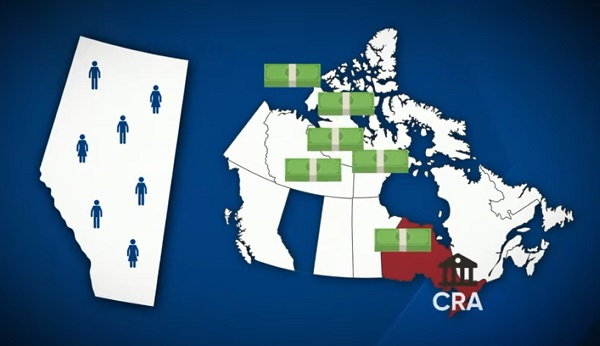Alberta
Alberta Juniors Choose Positive Path

Alberta Juniors Choose Positive Path
Everywhere there is gloom. Well, almost everywhere.
A welcome exception is the 15-team Alberta Junior Hockey League, which lost much of its gate revenue due to the coronavirus pandemic arrival at playoff time, and now waits for permission from Hockey Canada and Alberta Health Services to go ahead with its 2020-2021 season.
President Ryan Bartoshyk confirmed on Monday that his league is “in the process of drawing up our schedule right now. We’re aiming (to have teams on the ice) by Sept. 1 and we hope to get the season started by Sept. 18.” Any and all final decisions must meet with at least two levels of official approval, of course, but operators have expressed their confidence by agreeing to put in the work, recognizing that later starts (or no start) are still possibilities.
To an outsider, the clearest declaration of league independence is this: the schedule, with various possible opening dates pencilled in, is being drawn up for all 15 teams. This is most impressive when it is known that several franchises – no names provided by president Bartoshyk or any team spokesman – have expressed serious concern about the cost of business in the coming season.
We have lost at least one league camp for tryouts,” said a spokesman. “We know we’re going to lose more.”
Not included are the Blackfalds Bulldogs, who will replace the former Calgary Mustangs at the start of the 2021/2002 season. Bartoshyk was pleased to say “work on the new arena for Blackfalds is due to start this month.”
Among the established teams reported to have mentioned their problems outside of league meetings are the Canmore Eagles, but the team’s two captains and a pair of assistants have already been named for the coming season. At least a couple of promising signings have also been announced. As a result, pessimism has shrunk a great deal.
Also optimistic about the coming season are the Olds Grizzlys, whose attendance averaged well over 1,500 a game when they dominated Junior A ranks several years ago but dropped to about 600 a game last year. “This is a great sports community, a great place to be,” said club governor and vice-president executive Trent Wilhauk. “We know the fans will come back; they love their Grizzlys.”
Population of the community is slightly more than 10,000. “It’s a happening place when the team is going good.”
After wiping out last year’s playoffs and destroying some of the regular post-season increases at the gate, COVID-19 has continued to harm the AJHL, just as it has damaged so many other areas of the economy. “We have lost at least one league camp for tryouts,” said a spokesman. “We know we’re going to lose more.”
Those financial setbacks may have been dwarfed by the loss of some appealing playoff matchups. “Some of the teams that drew above-average numbers for us (Okotoks Oilers, Brooks Bandits, Sherwood Park Crusaders) didn’t have a playoff game before we had to stop,” Bartoshyk said. “They all had byes in the first round.”
Other teams with relative season-long success at the gate also missed money-raising opportunities. “It’s obvious that our league relies on corporate sponsorship and support at the gate,” Bartoshyk added, mentioning a handful of promising pending post-season clashes — Drayton Valley and Sherwood Park, the Whitehorse Wolverines and the Spruce Grove Saints, Camrose Kodiaks and Drumheller Dragons – that could not take place.
At this point, the day’s general feeling that the AJHL future remains bright surfaced again.
Said Bartoshyk: “We’re ready. We’ll do what is necessary.”
https://www.todayville.com/edmonton/hundreds-of-young-athletes-grow-more-anxious-by-the-day-acac-season-a-series-of-options/
Alberta
Median workers in Alberta could receive 72% more under Alberta Pension Plan compared to Canada Pension Plan

From the Fraser Institute
By Tegan Hill and Joel Emes
Moving from the CPP to a provincial pension plan would generate savings for Albertans in the form of lower contribution rates (which could be used to increase private retirement savings while receiving the same pension benefits as the CPP under the new provincial pension), finds a new study published today by the Fraser Institute, an independent, non-partisan Canadian public policy think-tank.
“Due to Alberta’s comparatively high rates of employment, higher average incomes, and younger population, Albertans would pay a lower contribution rate through a separate provincial pension plan while receiving the same benefits as under the CPP,” said Tegan Hill, director of Alberta policy at the Fraser Institute and co-author of Illustrating the Potential of an Alberta Pension Plan.
Assuming Albertans invested the savings from moving to a provincial pension plan into a private retirement account, and assuming a contribution rate of 5.85 per cent, workers earning the median income in Alberta ($53,061 in 2025) could accrue a stream of retirement payments totalling $454,741 (pre-tax)—a 71.6 per cent increase from their stream of CPP payments ($264,968).
Put differently, under the CPP, a median worker receives a total of $264,968 in retirement income over their life. If an Alberta worker saved the difference between what they pay now into the CPP and what they would pay into a new provincial plan, the income they would receive in retirement increases. If the contribution rate for the new provincial plan was 5.85 per cent—the lower of the available estimates—the increase in retirement income would total $189,773 (or an increase of 71.6 per cent).
If the contribution rate for a new Alberta pension plan was 8.21 per cent—the higher of the available estimates—a median Alberta worker would still receive an additional $64,672 in retirement income over their life, a marked increase of 24.4 per cent compared to the CPP alone.
Put differently, assuming a contribution rate of 8.21 per cent, Albertan workers earning the median income could accrue a stream of retirement payments totaling $329,640 (pre-tax) under a provincial pension plan—a 24.4 per cent increase from their stream of CPP payments.
“While the full costs and benefits of a provincial pension plan must be considered, its clear that Albertans could benefit from higher retirement payments under a provincial pension plan, compared to the CPP,” Hill said.

Illustrating the Potential of an Alberta Pension Plan
- Due to Alberta’s comparatively high rates of employment, higher average incomes, and younger population, Albertans would pay a lower contribution rate with a separate provincial pension plan, compared with the CPP, while receiving the same benefits as under the CPP.
- Put differently, moving from the CPP to a provincial pension plan would generate savings for Albertans, which could be used to increase private retirement income. This essay assesses the potential savings for Albertans of moving to a provincial pension plan. It also estimates an Albertan’s potential increase in total retirement income, if those savings were invested in a private account.
- Depending on the contribution rate used for an Alberta pension plan (APP), ranging from 5.85 to 8.2 percent, an individual earning the CPP’s yearly maximum pensionable earnings ($71,300 in 2025), would accrue a stream of retirement payments under the total APP (APP plus private retirement savings), yielding a total retirement income of between $429,524 and $584,235. This would be 22.9 to 67.1 percent higher, respectively, than their stream of CPP payments ($349,545).
- An individual earning the median income in Alberta ($53,061 in 2025), would accrue a stream of retirement payments under the total APP (APP plus private retirement savings), yielding a total retirement income of between $329,640 and $454,741, which is between 24.4 percent to 71.6 percent higher, respectively, than their stream of CPP payments ($264,968).

Joel Emes
Alberta
Alberta ban on men in women’s sports doesn’t apply to athletes from other provinces

From LifeSiteNews
Alberta’s Fairness and Safety in Sport Act bans transgender males from women’s sports within the province but cannot regulate out-of-province transgender athletes.
Alberta’s ban on gender-confused males competing in women’s sports will not apply to out-of-province athletes.
In an interview posted July 12 by the Canadian Press, Alberta Tourism and Sport Minister Andrew Boitchenko revealed that Alberta does not have the jurisdiction to regulate out-of-province, gender-confused males from competing against female athletes.
“We don’t have authority to regulate athletes from different jurisdictions,” he said in an interview.
Ministry spokeswoman Vanessa Gomez further explained that while Alberta passed legislation to protect women within their province, outside sporting organizations are bound by federal or international guidelines.
As a result, Albertan female athletes will be spared from competing against men during provincial competition but must face male competitors during inter-provincial events.
In December, Alberta passed the Fairness and Safety in Sport Act to prevent biological men who claim to be women from competing in women’s sports. The legislation will take effect on September 1 and will apply to all school boards, universities, as well as provincial sports organizations.
The move comes after studies have repeatedly revealed what almost everyone already knew was true, namely, that males have a considerable advantage over women in athletics.
Indeed, a recent study published in Sports Medicine found that a year of “transgender” hormone drugs results in “very modest changes” in the inherent strength advantages of men.
Additionally, male athletes competing in women’s sports are known to be violent, especially toward female athletes who oppose their dominance in women’s sports.
Last August, Albertan male powerlifter “Anne” Andres was suspended for six months after a slew of death threats and harassments against his female competitors.
In February, Andres ranted about why men should be able to compete in women’s competitions, calling for “the Ontario lifter” who opposes this, apparently referring to powerlifter April Hutchinson, to “die painfully.”
Interestingly, while Andres was suspended for six months for issuing death threats, Hutchinson was suspended for two years after publicly condemning him for stealing victories from women and then mocking his female competitors on social media. Her suspension was later reduced to a year.
-

 Business1 day ago
Business1 day agoCarney Liberals quietly award Pfizer, Moderna nearly $400 million for new COVID shot contracts
-

 Frontier Centre for Public Policy2 days ago
Frontier Centre for Public Policy2 days agoCanada’s New Border Bill Spies On You, Not The Bad Guys
-

 Addictions1 day ago
Addictions1 day agoWhy B.C.’s new witnessed dosing guidelines are built to fail
-

 Business1 day ago
Business1 day agoMark Carney’s Fiscal Fantasy Will Bankrupt Canada
-

 Opinion1 day ago
Opinion1 day agoCharity Campaigns vs. Charity Donations
-

 Energy2 days ago
Energy2 days agoCNN’s Shock Climate Polling Data Reinforces Trump’s Energy Agenda
-

 Red Deer1 day ago
Red Deer1 day agoWesterner Days Attraction pass and New Experiences!
-

 Alberta1 day ago
Alberta1 day agoAlberta Next: Taxation






